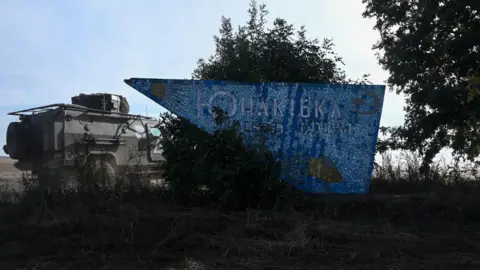In a striking assertion, Ukraine has reported a successful military action targeting a drone command unit located within Russia’s Kursk region. This incident, claimed by the Ukrainian general staff, coincides with recent indications of new incursions into Russian territory. The specifics of the attack revealed that the strike took place near the Russian village of Tyotkino, which has been at the center of ongoing hostilities.
Simultaneously, Russian authorities have indicated that an electrical substation in the town of Rylsk sustained damage as a result of the Ukrainian strike, leading to power outages in the area. This revelation raises concerns about the operational capabilities of Ukraine as it seeks to maintain pressure on Russian positions along the border. Reports suggest that these actions come on the heels of Moscow’s announcement in April, claiming it had successfully reasserted control over the entire Kursk region, nearly nine months after Ukraine executed a surprise invasion into Russian territory.
Despite Russian claims, Ukrainian officials maintain that their military presence is still active within the Kursk region. The situation escalated further when Alexander Khinshtein, the acting governor of Kursk, reported damage to two transformers at the Rylsk substation, which also resulted in injuries to two teenagers due to shrapnel from the blasts. Such incidents underline the volatile nature of the conflict, indicating that hostilities are not confined to Ukrainian soil.
Furthermore, multiple military bloggers from Russia have circulated unverified images that allegedly depict Ukrainian forces attempting to breach the border at Tyotkino. These reports indicate heightened tensions as Ukrainian units reportedly launched missile strikes over the border and traversed minefields using specialized vehicles. One blogger described the chaotic situation, where enemy forces destroyed bridges with rocket fire during the night and initiated an offensive with armored units in the morning.
On the Ukrainian side, officials have confirmed their continued military engagement in the Kursk region, emphasizing that even nine months post-incursion, their defense capabilities remain robust. The Ukrainian Defense Forces issued a statement asserting their operational presence within this contested region of Russia. While Moscow has not provided an official response to these ongoing developments, various military observers have published maps showcasing purported incursions by Ukrainian troops attempting to advance towards Tyotkino.
As the conflict intensifies, local authorities in Sumy, a locale just 12 kilometers from Tyotkino in northeastern Ukraine, have urged residents to evacuate two settlements in anticipation of escalated military action. This decision reflects the dire consequences that prolonged warfare has wrought upon border communities, which often find themselves caught in the midst of strategic conflicts.
Historically, Ukraine’s original incursion into the Kursk region occurred in August 2024, as part of a strategic maneuver to create a buffer zone designed to protect Sumy and its surrounding areas. This operation was not only aimed at mitigating immediate threats but also positioned to serve as leverage in potential future negotiations with Russia.
The unfolding scenarios in the Kursk region encapsulate the complexities of the ongoing conflict. With military operations continuing and territorial claims persistently contested, the realities on the ground deal with the physical and emotional toll on the populations involved. As active military engagement persists, both nations face escalating pressures, raising the stakes for regional stability and international diplomacy.
In conclusion, the conflict in Kursk represents emblematic tensions of a broader struggle, balancing military prowess with strategic maneuvering. As Ukraine continues to assert its military presence and efficiency, the international community watches closely, contemplating the implications of increased hostilities on geopolitical dynamics and humanitarian concerns in the region.



